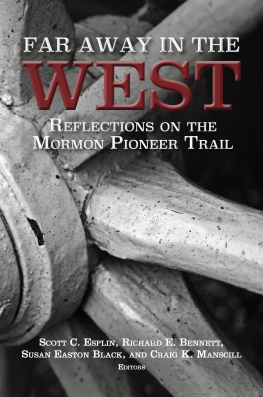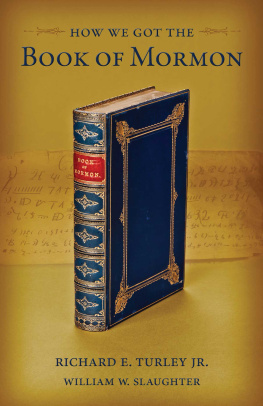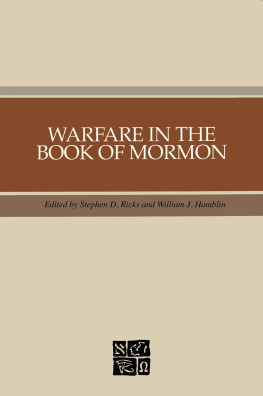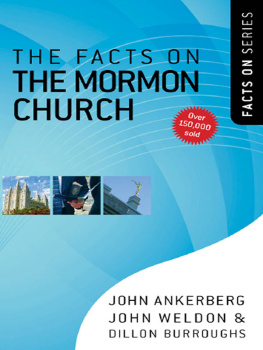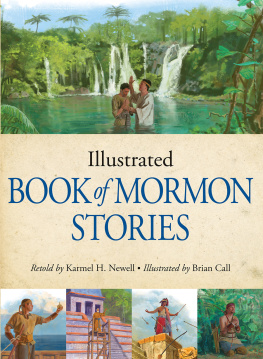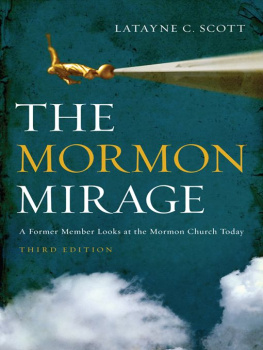Far Away in the West
Reflections on the Mormon Pioneer Trail
Scott C. Esplin, Richard E. Bennett, Susan Easton Black, Craig K. Manscill
2015 Brigham Young University.
Any uses of this material beyond those allowed by the exemptions in U.S. copyright law, such as section 107, Fair Use, and section 108, Library Copying, require the written permission of the publisher, Religious Studies Center, 167 HGB, Brigham Young University, Provo, Utah 84602. The views expressed herein are the responsibility of the authors and do not necessarily represent the position of Brigham Young University or the Religious Studies Center.
Published by the Religious Studies Center, Brigham Young University, Provo, Utah, in cooperation with Deseret Book Company, Salt Lake City.
Visit us at rsc.byu.edu.
2015 by Brigham Young University. All rights reserved.
Printed in the United States of America by Sheridan Books, Inc.
DESERET BOOK is a registered trademark of Deseret Book Company.
Visit us at DeseretBook.com.
Any uses of this material beyond those allowed by the exemptions in US copyright law, such as section 107, Fair Use, and section 108, Library Copying, require the written permission of the publisher, Religious Studies Center, 185 HGB, Brigham Young University, Provo, Utah 84602. The views expressed herein are the responsibility of the authors and do not necessarily represent the position of Brigham Young University or the Religious Studies Center.
978-0-8425-2969-3
Retail US $27.99
Cover design by Madison Swapp.
Interior design by Rebecca Bird and Alex Masterson.
Library of Congress Cataloging-in-Publication Data
Far away in the west : reflections on the Mormon pioneer trail / edited by Scott C. Esplin, Richard E. Bennett, Susan Easton Black, and Craig K. Manscill.
pages cm
Includes bibliographical references and index.
ISBN 978-0-8425-2969-3 (alk. paper)
1. Mormon pioneers--Utah. 2. Mormon Church--Utah--History--19th century. 3. Mormon Church--Illinois--Nauvoo--History--19th century. 4. Utah--History--19th century. 5. Nauvoo (Ill.)--History--19th century. 6. Mormon Pioneer National Historic Trail. 7. Frontier and pioneer life--Utah. I. Esplin, Scott C. (Scott Clair), 1974- editor, author. II. Bennett, Richard Edmond, 1946- editor, author. III. Black, Susan Easton, editor, author. IV. Manscill, Craig K., editor, author.
F826.F36 2016
979.224--dc23
2015026736
Introduction
The story of the Mormon exodus from Nauvoo, Illinois, to the valley of the Great Salt Lake still stirs the imagination of writers, artists, historians, and musicians. Letters, diaries, and other manuscript sources that relate to this exciting chapter in history continue to be discovered. When asked to lead a group of professors to revisit the Mormon Trail in 2012, I was frankly taken aback by how many committed scholars continue to discover so much of enduring value on this enduring legacy in Mormon history.
One of the ironies of Mormonism is that although it is an American religion, America has struggled to accept it. In fact, the early history of The Church of Jesus Christ of Latter-day Saints was a long chapter of rejection and persecution. For years after its restoration in upstate New York under the hand of Joseph Smith Jr. in 1830, the Church was on the run from place to place: first New York, then Kirtland, Ohio; Independence, Missouri; Nauvoo, Illinois; and finally Salt Lake City, Utah. Scholars have long argued over what poisoned the mix. Perhaps it was the radical claim of being the only true and restored church upon the earth. Or its ardent belief in the Book of Mormon and other scriptures besides the Bible. Many Americans came to believe that the allegiance of most early Saints was more to the prophet of their church than to the president of the United States, more to revealed scripture than to the American Constitution. There may have been too much talk of a kingdom of God for a republic of the people to accept. There was also the matter of a clash of cultures when a large concentration of Latter-day Saint Yankees moved to the slave state of Missouri in the early 1830s, and instead of establishing their Zion, they created a climate of suspicion and unrest that eventually led to their undoing. Mormons could not have chosen a more difficult time, a less promising place, and a more unwelcoming people than in Missouri.
The tragic expulsion of the Mormons from Missouri in that cruel winter of 183839, under the threat of extermination as decreed by Governor Lilburn W. Boggs, led to the forced three hundred-mile march of some eight thousand Mormons from the far west of Missouri to the eastern banks of the Mississippi to the more accepting state of Illinois. There, for the next seven years, the Mormons finally established a home in their beloved Nauvoo, where they hoped to build a permanent settlement and live and worship as they pleased. By 1844 some twelve thousand Latter-day Saints from the eastern United States, Canada, and Great Britain were crowding into their new surroundings in Nauvoo. And, for a while, their future looked promising.
But by 1844, the Saints were again facing ardent persecution from without and dissension from within. Many in Missouri continued to hold grievances against them and plotted to reclaim the Mormon Prophet. Nauvoo was becoming an economic powerhouse, causing other river towns, like Warsaw, to lose valuable business. And when talk began to surface that Joseph Smith and a few other Mormon leaders were secretly practicing polygamy, many former friends turned suspicious. Saintly scoundrels such as John C. Bennett, former mayor of Nauvoo, falsely charged that the city militiathe Nauvoo Legionwas plotting militarily against the very existence of the nation. When Joseph Smith announced in 1844 that he would seek the presidency of the United States, his critics branded him a political and religious megalomaniac, a prophet without constraint. In short, the anti-Mormon press tried hard to label Mormonism as anti-American, anti-Christian, and anti-familya lethal triplet of unfounded charges that nonetheless led to the murder of Joseph Smith and his brother Hyrum in Carthage Jail in June 1844.
While some others laid claim to Smiths mantle of prophetic leadership, Brigham Young and the Quorum of the Twelve Apostles eventually held sway. As shrewd a leader as he was sympathetic to the plights of his people, Brother Brigham knew that there was no future for the Church in Illinois. By 1845 he was quietly laying plans for a departure west to some new home far away where the Saints could finally live in peace. Faced with the threat of his own assassination; the possible interference with the Saints westward march by the United States Army of the West, who was suspicious of the peoples true intentions; and potential defections in greater numbers, Brigham Young began to lead his people out of Nauvoo in the teeth of a very cold February of 1846. His plan was to reach Council Bluffs on the Missouri River in a matter of weeks, establish farms and way stations at Grand Island and elsewhere in what is today Nebraska, and send a speedy vanguard company of pioneers over the mountains to some large valley all in 1846, the Year of Decision, as Bernard De Voto once termed it.
But alas, it was not to be. Brigham Young could escape from his enemies, but he could never get away from his followers. Instead of an express vanguard company of one or two hundred handpicked pioneers, some 2,500 Saints crowded around their leader. Such a large, relatively unprepared company hedged up his way, and instead of getting away from their Sugar Creek encampments just across the river from Nauvoo in early March, they languished there until mid-April. When they finally did begin to roll out across Iowa Territory, the rains came, incessant and torrential, so much so that instead of making their planned fifteen miles a day, they barely made one. With wagons sunk to their axles in mud day after day, many began to wonder whose side God was on after all. Desperately seeking his way across a three hundred-mile Iowa mudhole, Brigham Young ordered most of his struggling followers to build way stations or farms at Garden Grove and Mount Pisgah and plant spring crops for the thousands yet to follow. Later that summer he instructed others to return to Nauvoo to help the poor camps of refugees being hounded out of Nauvoo by mad militia mobs intent on destroying whatever vestige of Mormonism that remained. The entire plan of exodus was in disarray, with many people becoming sick from the elements. On the verge of starvation, hundreds would soon die. For a time the very salvation of the Church was at stake.

